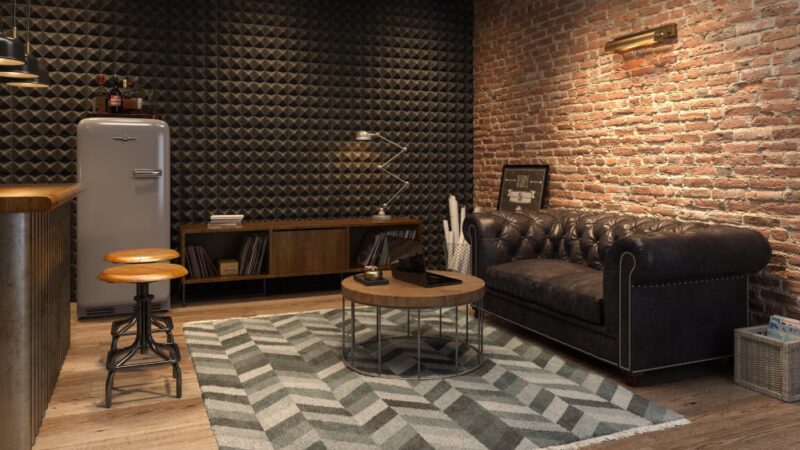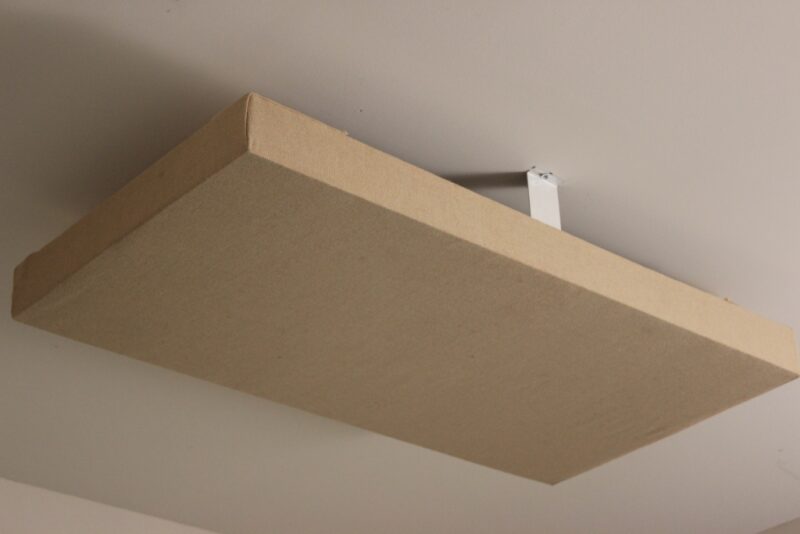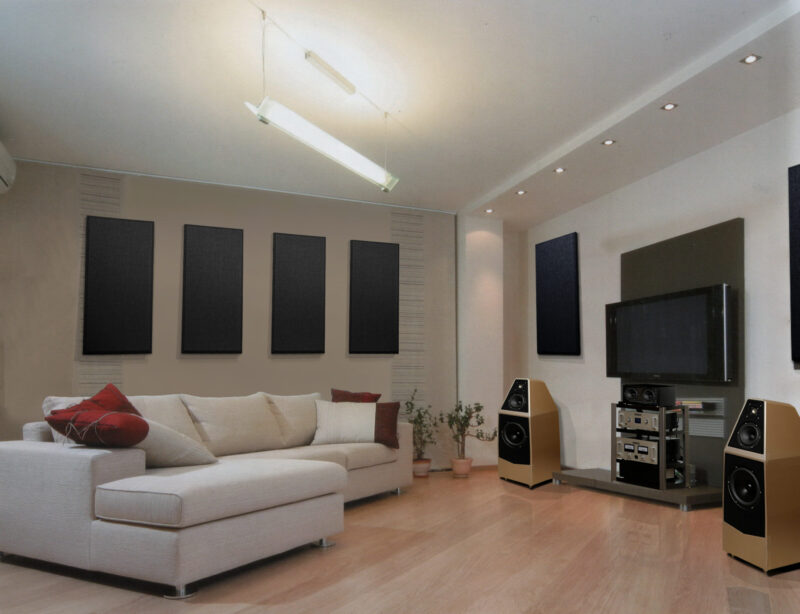Acoustic panels are an essential component in optimizing the sound quality of any space, from recording studios to home theaters. The placement of these panels is crucial for achieving the best audio experience. This comprehensive guide will explore the various aspects of placing acoustic panels for optimal sound enhancement.
Understanding Acoustic Panels
Before delving into placement strategies, it’s important to understand what acoustic panels are and how they work. Panels are designed to absorb sound waves, reducing reverberation and echo in a room.
They are made from sound-absorbing materials like foam or mineral wool. These panels can significantly improve sound clarity and reduce noise levels, making them ideal for a variety of settings.
Room Analysis: The Starting Point

The journey to optimal sound starts with a thorough analysis of the room. Every space has its unique acoustic characteristics, influenced by its size, shape, and the materials used in its construction.
Hard surfaces like glass or concrete reflect sound, while soft materials like carpets and curtains absorb it. Identifying the reflective and absorptive surfaces in a room helps in strategizing the placement of acoustic panels effectively, as explained by experts from acousticpanels.co.uk.
Strategic Placement for Maximum Effect
The strategic placement of acoustic panels is vital. Common areas for panel placement include walls and ceilings, as these surfaces typically reflect sound. However, the specific placement strategy depends on the room’s purpose.
For instance, in a recording studio, panels are often placed at reflection points where sound directly bounces back to the listener. In home theaters, panels might be distributed more evenly to create a balanced sound environment.
Dealing with Corners: Bass Traps

Low-frequency sounds, or bass, tend to accumulate in corners. This can lead to a boomy or muffled sound quality. Bass traps are a type of acoustic panel designed to absorb these low frequencies. Placing bass traps in the corners of a room can significantly improve sound clarity by controlling bass buildup.
Ceiling and Floor Considerations
While walls are the most common placement for panels, ceilings and floors also play a critical role in a room’s acoustics. Sound can bounce off these surfaces, causing echoes and blurring sound clarity. Panels or diffusers on ceilings can help mitigate these issues. In some cases, carpets or rugs on floors can also aid in absorbing excess sound.
Aesthetic Integration
While functionality is the primary concern, aesthetics also matters, especially in spaces like home theaters or living rooms. Panels come in various colors and designs, allowing them to blend with or enhance the room’s decor. Some panels can even be customized with printed images or patterns, offering both acoustic improvement and visual appeal.
Regular Maintenance for Longevity

To ensure that panels continue to perform optimally, regular maintenance is necessary. This includes cleaning the panels to prevent dust accumulation, which can affect their sound-absorbing capabilities. Also, periodic inspections for any damage or wear and tear are important to maintain their effectiveness.
Cost Considerations
When planning to install acoustic panels, budgeting is a critical step. The cost varies depending on factors like panel material, size, quantity, and brand quality. High-end panels offer superior sound absorption but at a higher price.
It’s also important to consider the cost of additional materials for installation, such as mounting hardware. For budget-conscious individuals, there are cost-effective alternatives that still provide decent sound absorption.
Balancing between quality and affordability is key. Keep in mind that investing in good quality panels can be cost-effective in the long run, as they tend to be more durable and effective.
DIY vs. Professional Installation

Choosing between DIY and professional installation of acoustic panels depends on several factors. DIY installation can be more budget-friendly and offers a sense of personal accomplishment. However, it requires a good understanding of acoustic principles and handyman skills. On the other hand, professional installation guarantees expertise and precision but at a higher cost.
Professionals can also provide valuable advice on panel placement for optimal sound quality. For complex spaces or high-end audio environments, professional installation is often recommended to ensure the best results.
Room Purpose and Acoustic Goals
The purpose of the room plays a pivotal role in determining the acoustic treatment strategy. A recording studio requires precise sound control to capture clean audio, while a home theater aims for immersive sound. For spaces like offices or public areas, the goal may be to reduce overall noise levels for comfort.
Understanding the primary function of the space helps in selecting the right type and placement of acoustic panels. This tailored approach ensures that the acoustic treatment aligns with the specific sound requirements of the room.
Advanced Techniques

Beyond basic panel placement, there are advanced techniques for enhanced sound optimization. These include using diffusers to scatter sound waves, creating a more natural and balanced acoustic environment. Another technique is to combine absorption and diffusion strategically to manage both high and low-frequency sounds.
For professional settings, controlled room modes and sound stage enhancement techniques can be employed for precision sound tuning. These advanced methods require a deeper understanding of acoustics and are often implemented in high-end audio environments.
Acoustic Measurement Tools
To achieve precise acoustic treatment, various measurement tools are used. Sound level meters help in assessing the overall sound pressure levels in a room. For more detailed analysis, acoustic analysis software can provide insights into frequency response, reverberation time, and echo patterns.
Room mode calculators are valuable in identifying problematic frequencies specific to the dimensions of a room. Using these tools, one can make data-driven decisions on panel placement and type, ensuring the acoustic treatment is tailored to the specific needs of the space.
Conclusion
In conclusion, the proper placement of acoustic panels is a nuanced process that requires understanding the unique acoustic properties of a space. By analyzing the room, strategically placing panels and bass traps, and considering aesthetic aspects, one can significantly enhance the sound quality of any environment. Regular maintenance ensures the longevity and effectiveness of these acoustic solutions.

